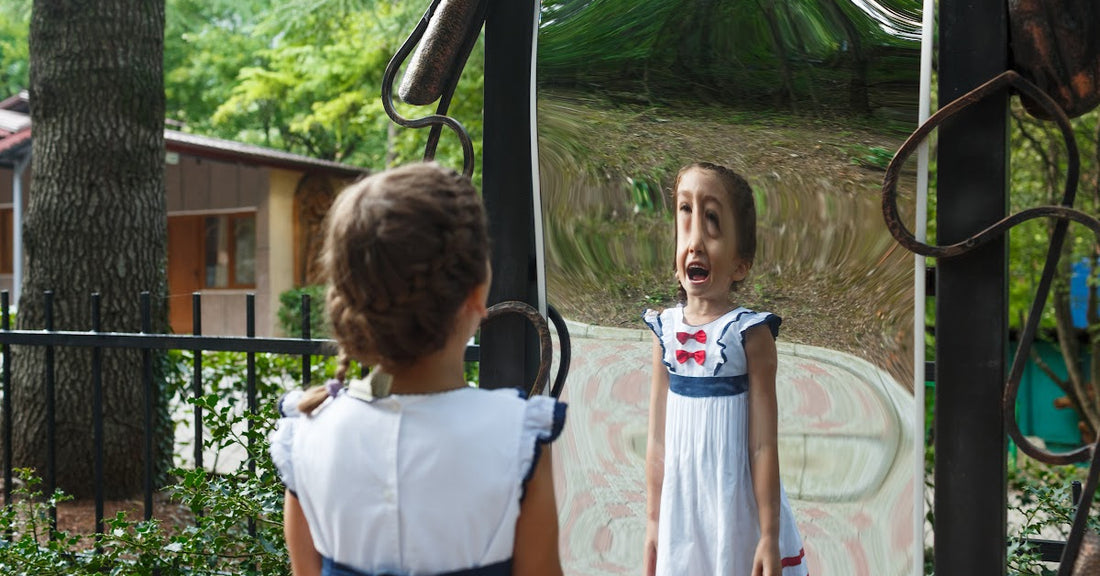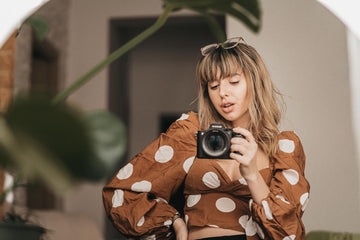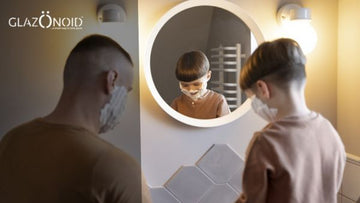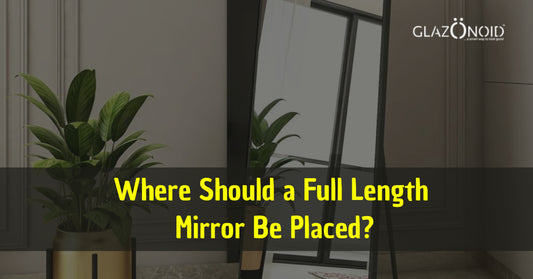
Why do I look thinner in some mirrors and bigger in others? Is it a curved mirror
Have you ever wondered why you look different in different mirrors? Why do some mirrors make you look slimmer, and others make you look wider? Is it just your imagination, or is there a scientific explanation behind this phenomenon? Is it a curved mirror?
The shape and quality of the mirror determine the answer. Mirrors aren't perfectly flat surfaces; their curves affect light and images. These can be intentional or unintentional, depending on how they were made and installed.
Curved Mirror: What Is It and How Does It Work?
A curved mirror is a mirror with a curved reflecting surface. The surface may be either convex (bulging outward) or concave (hollowed out). Most curved mirrors have a spherical surface, which can form images with varying degrees of distortion.
Convex Mirror
A convex mirror or diverging mirror is a curved mirror in which the reflective surface bulges towards the light source. Convex mirrors reflect light outwards. Such mirrors always form a virtual image, which is smaller than the object and gets larger as the object approaches the mirror.
Convex mirrors are used in:
- Security mirrors: They allow a wider view of an area and can help prevent theft or vandalism.
- Rear-view mirrors: They provide a wider field of view for drivers and reduce blind spots.
- Magnifying mirror: A magnifying mirror magnifies small objects when they are placed close to it.
Concave Mirror
Concave mirrors have a reflective surface that recesses inward, causing them to reflect light inward and focus it. They can form real or virtual images, depending on the object's position relative to the mirror's focal point.
Concave mirrors are used in:
- Telescopes: They can collect and focus light from distant objects and produce magnified images.
- Flashlights: They can produce a narrow beam of light that travels far.
- Placing a shaving or makeup mirror close to the user can produce enlarged images of the face.
Intentional curved mirror
Curved mirrors intentionally create distorted images, called funhouse or carnival mirrors. They can make people look taller, shorter, fatter, thinner, or wavy, and are for entertainment only, not accurate reflection.
However, practical reasons justify the use of some curved mirrors. For instance, security mirrors or rearview mirrors use convex mirrors because they reflect a wider field of view than flat mirrors. Similarly, shaving mirrors or makeup mirrors use concave mirrors because they magnify and clarify the image.
The curvature of these mirrors affects how they reflect light rays. A convex mirror bulges outward and makes parallel light rays diverge (spread out) after reflection. This makes the image appear smaller and farther away than it is. Concave mirror caves inward and makes parallel light rays converge (come together) after reflection. This makes the image appear larger and closer than it is.
Unintentional curved mirror
Various factors such as gravity, temperature changes, manufacturing defects, installation errors, or aging can cause slight curves in even our regular household or dressing room mirrors, which we expect to be flat and give us an accurate reflection of ourselves.
Over time most mirrors bend from top to bottom, and there can be a slight curvature at the edge. "Your home mirror can do this due to its own weight," Ken explained.
A slightly curved mirror can stretch or compress your image depending on your distance from it. Standing close to the mirror can make you look thinner as your image stretches vertically along the curve, while standing far away can make you look wider as your image compresses horizontally.
Another factor affecting how you look in different mirrors is the focal length of the camera lens that took your picture. Curved lenses may cause barrel distortions and make you look fatter. If you look slimmer in mirrors but fatter in pictures, you have nothing to worry about.
How to find a true mirror
If you want to find a true mirror that reflects your actual size and shape without any distortion, here are some tips:
- Look for a high-quality mirror that is made of thick glass with a smooth surface.
- Stand at least 10 feet away from the mirror to avoid any perspective distortion.
- Use natural light or soft artificial light to avoid any shadows or glare on your face or body.
- Wear clothes that fit well and flatter your figure without being too tight or loose.
- Stand straight with good posture and smile confidently.
Remember that your appearance can vary depending on many factors, such as lighting, clothing, mood, angle, distance, etc., so don't let one bad or curved mirror ruin your day! You are beautiful no matter what!





